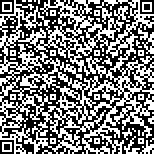下载中心
优秀审稿专家
优秀论文
相关链接
摘要

利用欧洲空间局发布的土壤湿度和盐度卫星最新版本V5.04及V5.05的2010年5月至2012年4月的L1C级亮温数据,分析了其2维视场中存在的亮温偏差和年际变化。亮温偏差在视场中的分布不均匀并随季节变化。其年际变化超过1 K。太阳及其尾迹在视场中的位置随季节变化并对该卫星测量的亮温产生影响,是亮温偏差年际变化的主要来源。另外,太阳高度角的季节性变化会使该卫星天线的物理温度产生季节性变化,并通过天线模型使其测量亮温产生季节性偏差。
Up-to-date Soil Moisture and Ocean Salinity (SMOS) level 1C (L1C) Brightness Temperatures (TB), which are processed with the operational prototype V5.04 and V5.05, are used to analyze the systematic biases between averaged TB measurements and simulations in Fields of View (FOV) from May 2010 to April 2012. The peak-to-peak variations in the biases are higher than 1 K in magnitude. Sun contaminations, including sun alias and sun tails, are strong sources of bias variations in the FOV. The sun correction in the level 1 (L1) image reconstruction is imperfect. By using the antenna model in L1, seasonal variations in the biases and the heating of the instrument are observed.

